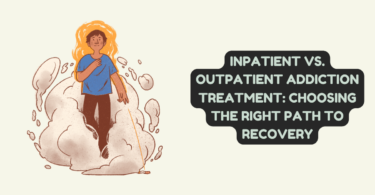
Chiropractic
Chiropractic care is rooted in the belief that the body has an innate ability to heal itself. It focuses on addressing musculoskeletal and nervous system disorders primarily through spinal adjustments.
After an injury, many individuals seek this form of alternative medicine to promote natural recovery, alleviate pain, and restore normal function. With the surge in popularity, it is essential to discern the safety of chiropractic interventions following injuries and understand the associated benefits and risks.
Fortunately, this article sheds light on the intricacies of seeking chiropractic care after an injury.
Understanding The Nature Of The Injury
Every injury is unique, and the appropriateness of chiropractic care largely depends on its nature and severity. While some injuries, like mild sprains or muscle strains, can benefit from early intervention, others, such as fractures or severe disc injuries, might require a waiting period or alternative treatments.
Moreover, understanding the type of injury is crucial in deciding which chiropractic techniques are suitable. For instance, while a high-velocity adjustment might not be recommended immediately after certain injuries, gentler techniques like soft tissue therapy or low-force adjustments may be preferable.
Consulting Injury 2 Wellness or other healthcare centers for an accurate diagnosis can help determine the most beneficial course of action.
Immediate Benefits
Chiropractic care can be beneficial for many individuals following an injury, depending on the nature and severity of the injury, as well as individual health factors. Chiropractic care focuses on the diagnosis and conservative management of disorders related to the musculoskeletal system, particularly the spine.
Some of the potential benefits of chiropractic care after an injury include:
Pain Relief
Chiropractic adjustments target specific areas of the body, aiming to restore normal function to joints and tissues. By doing so, many patients experience a significant reduction in pain levels, often without the need for medications which can come with side effects.
Improved Mobility
Injuries often lead to joint misalignments or restricted movement. Chiropractic care, through specific adjustments, works to correct these misalignments, helping restore the full range of motion and allowing patients to move more freely and with less discomfort.
Reduction Of Inflammation
Misaligned joints or vertebrae can prompt inflammation in the surrounding tissues, causing pain and hindering healing. Chiropractic adjustments help to realign these joints, which can subsequently reduce inflammation and support the body’s natural healing processes.
Restored Function
Chiropractic care doesn’t just treat symptoms; it addresses the root cause of musculoskeletal problems. By realigning the spine and other joints, it aims to restore normal function, allowing patients to return to their regular activities with ease.
Avoidance Of Chronic Issues
Early intervention with chiropractic care after an injury can help prevent the progression of acute issues into chronic ones. Promptly addressing misalignments can help to prevent long-term complications and pain that might otherwise develop.
While many people report benefits from chiropractic care, it’s essential to consult with a healthcare professional to determine the most appropriate treatment for a specific injury. Some conditions may not be suitable for chiropractic intervention, and other medical treatments or therapies may be necessary.
Potential Risks
Like any medical treatment, chiropractic care comes with its set of potential risks, especially if sought without proper evaluation post-injury. Here are some of the potential risks and precautions associated with chiropractic care:
Neck Adjustments And Stroke
Chiropractic neck adjustments might be linked to vertebral artery dissection, a rare type of arterial tear. This condition has the potential to lead to a stroke, presenting serious neurological challenges.
While the direct connection remains debated, patients should stay informed and discuss any hesitations with their chiropractors.
Spinal Cord Injury
Improper spinal manipulations can risk damaging the spinal cord or its surrounding structures. Patients with pre-existing conditions can be especially vulnerable. A comprehensive pre-treatment assessment is essential to identify and mitigate such risks.
Herniated Discs
Chiropractic adjustments, particularly of the spine, can sometimes result in or exacerbate herniated discs. Symptoms might include sharp pain, numbness, or radiating discomfort. It’s crucial to identify pre-existing disc issues before undergoing any spinal treatment.
Soft Tissue Injury
After chiropractic care, some might experience temporary soreness or stiffness, often due to minor soft tissue strains. While these effects are typically transient, they should be monitored. Persistent or increasing discomfort should be communicated to the chiropractor.
Reactions To Adjunct Therapies
Chiropractors often employ adjunct treatments such as electrical stimulation, ultrasound, or acupuncture. Each modality offers benefits but carries its own set of potential risks, like burns or infections. Patients should ensure that these treatments are administered by trained professionals under safe conditions.
In chiropractic care, patients should always be informed and prioritize their safety. Adopting precautions ensures a balanced approach to treatment, emphasizing both therapeutic benefits and safety.
Takeaway
Chiropractic care offers a holistic approach to healing, emphasizing the body’s intrinsic ability to recover. While many have found solace in its techniques following injuries, it is paramount to approach it with an informed perspective, understanding both its potential advantages and associated risks.
Through careful evaluation, consultation with healthcare professionals, and prioritizing open dialogue, patients can harness the healing potential of chiropractic care while ensuring their well-being remains at the forefront.






